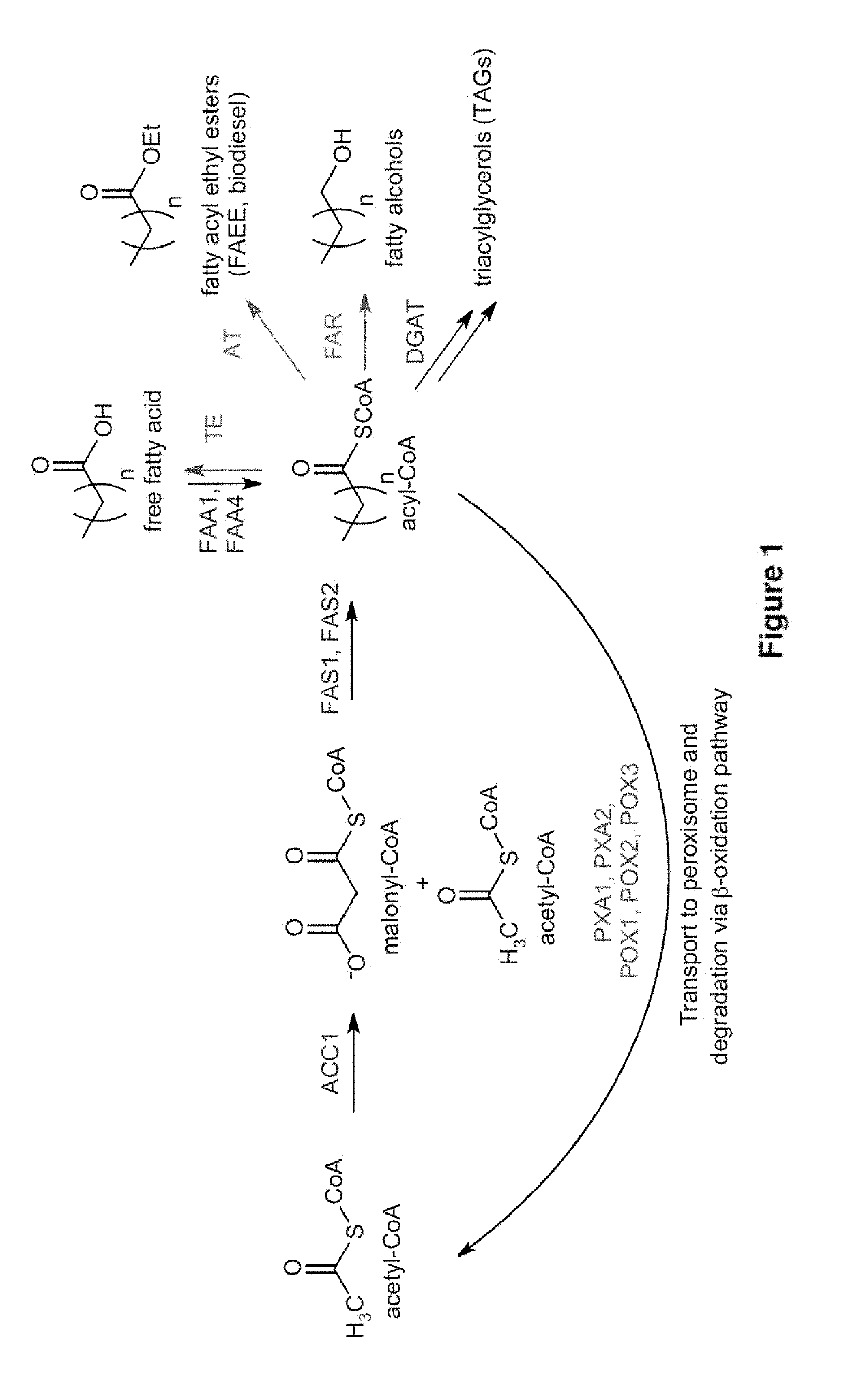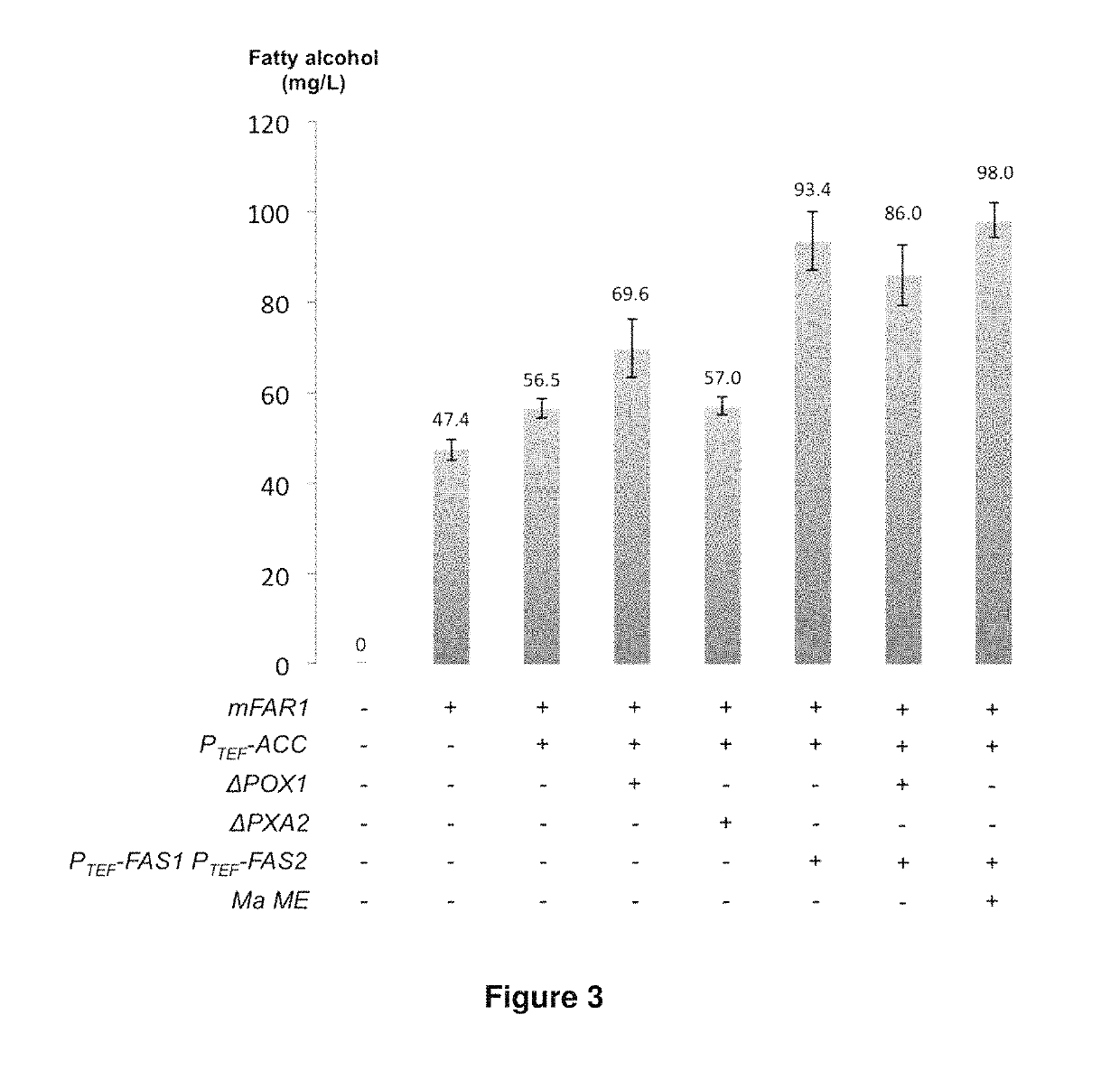Yeast cell modified to overproduce fatty acid and fatty acid-derived compounds
a technology of fatty acid and yeast cells, applied in the direction of enzymology, ligases, transferases, etc., can solve the problem of not being able to be used directly as fuel, and achieve the effect of more energy
- Summary
- Abstract
- Description
- Claims
- Application Information
AI Technical Summary
Benefits of technology
Problems solved by technology
Method used
Image
Examples
example 1
Metabolic Engineering of Saccharomyces cerevisiae for Production of Fatty Acid-Derived Biofuels and Chemicals
[0165]As the serious effects of global climate change become apparent and access to fossil fuels becomes more limited, metabolic engineers and synthetic biologists are looking towards greener sources for transportation fuels. In recent years, microbial production of high-energy fuels by economically efficient bioprocesses has emerged as an attractive alternative to the traditional production of transportation fuels. Here, we engineered the budding yeast Saccharomyces cerevisiae to produce fatty acid-derived biofuels and chemicals from simple sugars. Specifically, we overexpressed all three fatty acid biosynthesis genes, namely acetyl-CoA carboxylase (ACC1), fatty acid synthase 1 (FAS1) and fatty acid synthase 2 (FAS2), in S. cerevisiae. When coupled to triacylglycerol (TAG) production, the engineered strain accumulated lipid to more than 17% of its dry cell weight, a four-fol...
PUM
 Login to View More
Login to View More Abstract
Description
Claims
Application Information
 Login to View More
Login to View More - R&D
- Intellectual Property
- Life Sciences
- Materials
- Tech Scout
- Unparalleled Data Quality
- Higher Quality Content
- 60% Fewer Hallucinations
Browse by: Latest US Patents, China's latest patents, Technical Efficacy Thesaurus, Application Domain, Technology Topic, Popular Technical Reports.
© 2025 PatSnap. All rights reserved.Legal|Privacy policy|Modern Slavery Act Transparency Statement|Sitemap|About US| Contact US: help@patsnap.com



